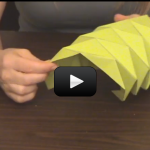If I asked you to define the word force, what would you say? You probably have a feeling for what force means, but you may have trouble putting it into words. It's kind of like asking someone to define the word “and” or “the”. Well, this lesson is all about giving you a better feeling for what the word force means. We'll be talking a lot about forces in many lessons to come. The simplest way to define force is to say that it means a push or a pull like pulling a wagon or pushing a car. That's a correct definition, but there's a lot more to what a force is than just that.
There are four forces in the universe that make everything move, shift, explode, zoom, wiggle, and dance. As two of these forces require a nuclear reactor in your garage, we'll just focus on the other two for now: the electromagnetic and the gravitational. (Actually, scientists think they found a fifth, but we'll stick with the basics to get started.)
Scientific Concepts:
- A force is a push or a pull.
- There are four fundamental forces. In order of strength they are strong nuclear force, electromagnetism, weak nuclear force, and gravity.
- A force field is an invisible area around an object within which that object can cause other objects to move.
- A force field can be attractive (pull an object towards it) or repulsive (push an object away).
- The closer something gets to the object causing the force, the stronger the force gets on that object. This is the inverse-square law.
- The four basic force fields are gravity, magnetic, electric, and electromagnetic.
- An object will be pushed or pulled in the direction in which the overall net force is acting on it.
- The net force is the sum of all the forces on an object.









